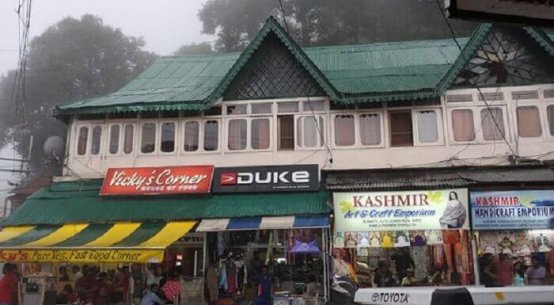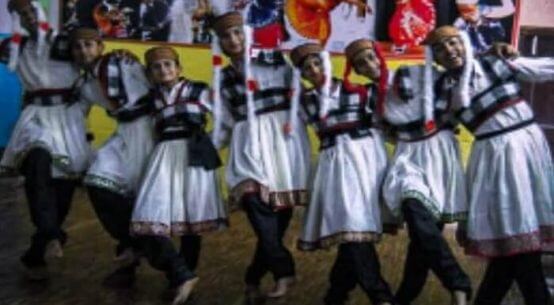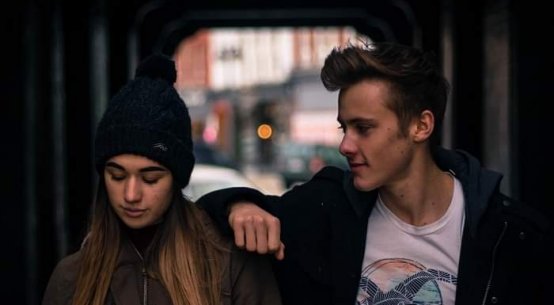Tensile fabric has emerged as a popular and innovative material in modern architecture. Characterised by a unique structural design based on tensioning membranes with cables or wires, tensile fabric structures are not only visually impressive but also highly functional. Let’s discuss the characteristics, uses, types, and environmental benefits of tensile fabric.
What is Tensile Fabric?
Tensile fabric, often referred to as tensioned fabric, is a thin, flexible material that is stretched tight and held in place by tensioning systems. In most cases, the system utilises cable or wire supports to create a sturdy, tensile structure capable of withstanding environmental stress. No other construction material is more commonly used in making dramatic, attention-grabbing designs that are capable of standing up to environmental conditions.
Types of Fabrics Used for Tensile Structures
There are different kinds of fabrics, each of varying durability, fire resistance, and transparency. Thus, they differ in the kind of usage they are fit for:
- PVC-Coated Polyester Fabric: This is an affordable option for making Tensile Structure Manufacturers. The strength of the structure ranges up to 10-20 years. It is lighter with easy installation and passes the B.S. 7837 fire safety tests.
- ETFE Foils: ETFE foils are applied to inflatable pillow structures. Inflatable pillow structures are quite well known for their thermal features. It permits transparency from 20 to 99%, and it can be perfectly used where the environment requires light transmission.
- PTFE-Coated Glass Fabric: PTFE-coated fabric is generally used in permanent structures and lasts up to about 30 years with the additional feature of being ultraviolet ray-resistant. They have fire-resistant features and can be applied for high-safety applications in building construction.
Uses of Tensile Fabric Structures:
- As a Showpiece Element: Tensile fabric structures are appropriate for the focal points in a city that can provide an attractive showpiece for traditional and modern buildings alike.
- Over Expansive Column-Free Zones: Tensioned structures make wide coverage possible without a need for support columns and can be best used in sports stadiums, airport terminals, and other large public space congregation areas.
- Transitional and Modular Buildings: As they are light in weight, tensile fabric structures are applied to temporary settings, like educational facilities, travelling exhibitions, or modular structures to be installed and uninstalled easily.
- Canopies and Skylights: Tensile fabrics are used as fashionable canopies or skylights in shopping malls, atriums, or even open walkways. It provides shade, reduces the heat, and gives good aesthetics.
Key Features of Tensile Fabric Structures
- Flexibility and Versatility: Tensile fabric structures have the most flexible options, which can be shaped in virtually any form. Typically founded on two common shapes-Saddle and Cone they can be changed or combined to meet different requirements of design.
- Light weight and resistant: Though lightweight, the tensile fabric structures are of sturdy designs. That is why tensile structures can be considered as good alternatives to the traditional types of construction. They allow covering large areas without being supported by heavy systems of support and they are durable enough to withstand harsh weather.
- Aesthetic: The tensile fabric structures look elegant in a modern manner, thus ideal for being standalone showpieces or as add-ons in existing structures.
Where to Use Tensile Fabric Structures
Tensile fabric structures are suitable for all environments:
- Public Environments: Parks, plazas, and shopping centres use tensile fabric to provide shade and shelter and add architectural interest.
- Commercial Spaces: Tensile fabric will be used in canopies to provide open, column-free spaces that improve the throughput of people in malls, airports, or transport stations.
- Event Venues: It is a good solution in temporary or semi-permanent structures, like festival venues and exhibitions outdoors.
- Residential Schemes: The structure of tensile fabric will be used outdoors for shades, garden buildings, or private patios, providing aesthetic appeal with functionality.
Environmental Sustainability of Tensile Fabric Structures
- Material Efficiency: It uses minimal material but can cover large spans, making it a resource-friendly option for large construction works.
- Natural Ventilation and Daylighting: Designing a tensile fabric structure allows natural ventilation and daylighting, which means this one can reduce artificial lighting and air conditioning, therefore lowering the energy consumption of the building.
- Recyclable Materials: The vast majority of tensile fabrics, including PVC polyester, ETFE foils, and polyolefin fabrics, can be recycled, meaning a virtually zero environmental impact at the end of life for the structure.
When should you choose a Tensile Fabric Structure?
It makes sense to select a tensile fabric structure when:
- Functional and Aesthetic designs are Required: when you want a structure that functions as a useful answer as well as an architectural statement.
- Flexibility is Key: This is perfect for projects like temporary event venues or modular buildings that might need to be set up or taken down quickly.
- Priority is on Sustainable Practices: Tensile fabric structures are an eco-friendly option for projects that want to maximise daylighting, minimise material use, and encourage recycling.
Challenges and Issues:
Though tensile fabric structures have a lot of advantages, the following are some considerations:
- Maintenance Needs: Though a few fabrics are durable, some of them require periodic maintenance for long life where the environmental conditions are more rigorous.
- Specialised Engineering: Due to the unique design, tensile fabric structures might require expertise in specialised engineering to ensure that they are not only safe but pleasing to the eye.
- Potential Limitations in Shape: Although flexible, tensile fabric structures rely on saddle and cone designs that limit the kind of shape without major customisation.
Future of Tensile Fabric Structures
Material science and architectural engineering are bound to evolve further and make tensile fabric structures much more innovative. Improvements in terms of fabric durability, weather resistance, and fire safety standards will only increase its appeal. Its aesthetic beauty with structural efficiency and sustainability features closely resonate with all the present trends of architecture that are relatively contemporary, focusing on eco-friendliness and minimalism.
Conclusion
Tensile fabric structures are one of the most impressive architectural solutions. They combine aesthetic appeal with practical functionality. They have properties that are light, durable, and sustainable and are suitable for use in a wide range of applications, from public spaces and commercial centres to residential gardens. The more architects and designers look for new possibilities, tensile fabric structures will undoubtedly play a more significant role in shaping the future of architecture. Tensile fabric, either as a temporary event or permanent installation, offers the solution to modern requirements on aesthetics and structural needs.
FAQs:
Q. What is the life of tensile fabric?
PVC-coated fabrics are extensively used in tensile structures because they are more durable, translucent, and economical. The tensile fabric can live for 20 years based on the material’s strength and high flexibility.
Q. Is tensile fabric sustainable?
Tensile fabric structures are sustainable for several reasons. It uses fewer resources and causes less environmental damage than other traditional building materials. Tensile fabrics are lightweight, so the raw material needed is relatively less. Energy consumption is also low, as it consumes less fuel for transportation and installation. Altogether, it makes an eco-friendly choice in construction.
Q. Is tensile fabric ideal for residential use?
Tensile fabric structures are becoming popular and highly sought after for their sleek modern look, versatility, and lightweight construction. Today, it is increasingly finding application in residential uses, including patio coverings, garden canopies, and outdoor shade covers.



